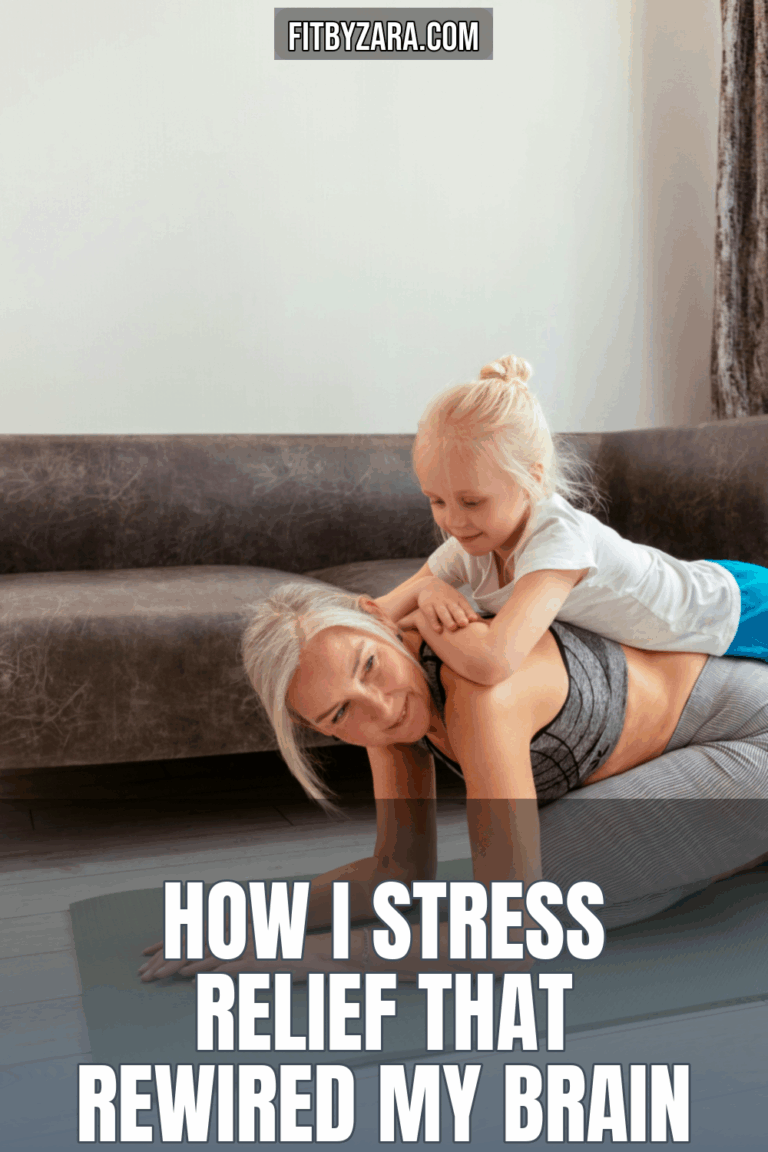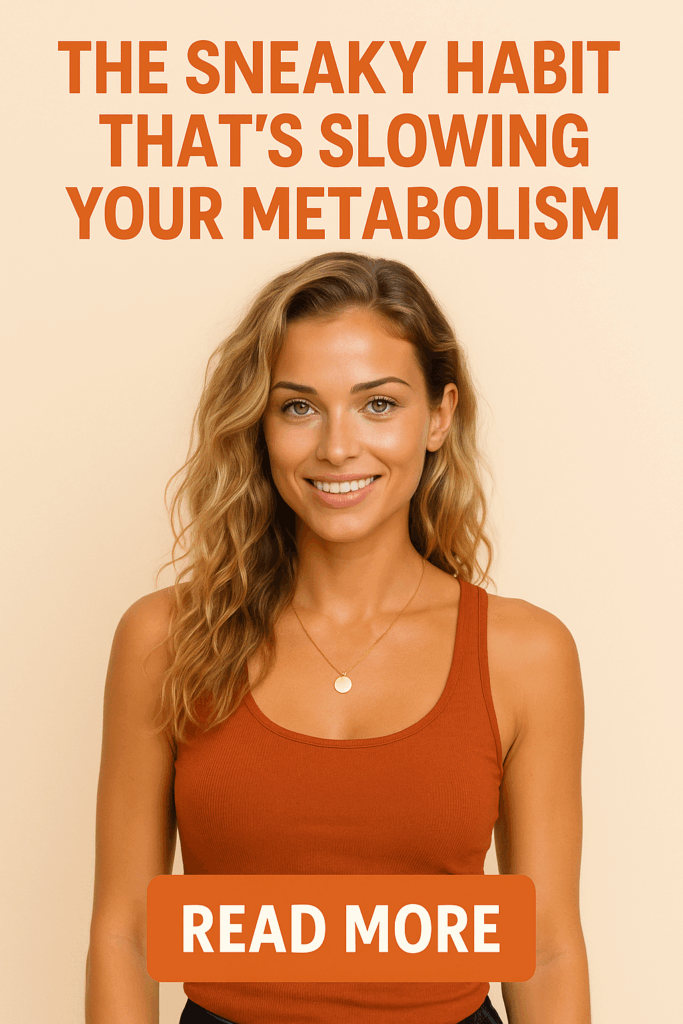Stress is a universal part of life, but for many women over 30, it can feel like an unwelcome companion that never leaves. Whether it’s work deadlines, family responsibilities, or personal pressures, stress can take a toll on our minds and bodies. But what if I told you there’s a way to not only relieve stress but also rewire your brain to handle it better? I invite you to join me on this journey of discovery and empowerment.

Hi, I’m Zara — fitness junkie, wellness nerd, and the voice behind FitByZara.com. This site is all about smart fitness and science-backed wellness tips for real women who want to feel their best.
The Challenge: Embracing Mindfulness
3-Day Energy & Metabolism Reset
Grab the 3-Day Energy & Metabolism Reset — a quick-start guide to feel lighter, more energized, and back in control.

Where should I send your free reset guide?
What is Mindfulness?
Mindfulness is the practice of being present in the moment without judgment. It’s a powerful tool for managing stress and anxiety, allowing you to step back from the chaos of life and find clarity. The challenge? To incorporate mindfulness into your daily routine and experience its transformative effects.
Why Mindfulness?
- Reduces Stress: Mindfulness helps calm the mind, reducing the physiological effects of stress.
- Enhances Focus: Practicing mindfulness improves concentration and productivity.
- Boosts Emotional Health: It promotes a positive mindset, leading to greater emotional resilience.
Getting Started: Mini Checklist
1. Set Your Intention: Decide to prioritize your mental health.
2. Pick a Mindfulness Practice: Choose between meditation, deep breathing, or mindful walking.
3. Start Small: Commit to just 5-10 minutes a day.
4. Create a Space: Find a quiet spot where you won’t be disturbed.
5. Track Your Progress: Keep a journal to note your feelings and experiences.
My Mindfulness Journey
When I first began this challenge, it felt daunting. I was skeptical, thinking, “How could sitting quietly actually change anything?” But I was curious and committed. Here’s what I discovered along the way.
Week 1: The Struggle Is Real
Getting Started
The first week was hard. My mind raced with to-do lists and worries. I remember sitting down to meditate and immediately thinking, “What am I doing? I have so much to accomplish!” But I reminded myself that this was a step towards self-care.
Tip: When distractions arise, observe them without judgment, then gently return your focus to your breath.
Week 2: Finding My Rhythm
Consistency is Key
By the second week, I began to find a rhythm. I set a specific time each day, usually in the morning before my family woke up. Creating a routine helped solidify this practice as part of my day.
Zara says: “Mindfulness is not about escaping reality; it’s about embracing it with a calm heart.”
Week 3: The Breakthrough Moment
Feeling the Shift
Around week three, I noticed a significant change. I was less reactive to stressors. Instead of feeling overwhelmed by my responsibilities, I felt more in control. It was like I had a pause button I could hit before reacting to stressful situations.
Week 4: Embracing Imperfection
Being Real with Myself
Mindfulness is about accepting the present moment as it is, even when it’s messy. This week, I learned to let go of perfectionism. I aimed to fully experience each moment, whether I was cooking dinner or helping my kids with homework.
Expanding Beyond Mindfulness
Once I felt comfortable with mindfulness, I explored other methods for stress relief, including:
1. Physical Activity
Why Exercise?
Physical activity releases endorphins, which help improve mood and reduce stress levels.
- Choose Your Favorite: Whether it’s yoga, running, or dancing, find an activity that you love.
- Aim for 30 Minutes: Commit to at least 30 minutes a few times a week.
2. Nature Therapy
Connecting with Nature
Spending time outdoors boosts your mood and reduces stress.
- Take a Daily Walk: Even a short stroll can help clear your mind.
- Practice Grounding: Walk barefoot on grass or sand to connect with the earth.
3. Creative Outlets
Explore Your Creativity
Engaging in creative activities can be incredibly therapeutic.
- Try Journaling: Write down your thoughts, feelings, and experiences.
- Pick Up a Hobby: Painting, crafting, or playing an instrument can provide an escape.
Rewiring My Brain
Through these practices, I began to notice my thoughts changing. Stressful situations that once sent me into a spiral of anxiety became more manageable. Here’s how I realized I was rewiring my brain:
Signs of Change
- Less Reactivity: I was able to pause before reacting, leading to more thoughtful responses.
- Improved Relationships: I found myself more present with my loved ones, enhancing my connections.
- Increased Resilience: Challenges no longer felt insurmountable; I approached them with a problem-solving mindset.
Key Takeaways
- Be Patient: Change takes time. Celebrate small victories along your journey.
- Stay Committed: Consistency in practice is essential for lasting change.
- Adapt and Evolve: Your journey is personal. Adjust your practices to fit your lifestyle and needs.
Conclusion: Join the Challenge
I invite you to embrace this challenge of finding stress relief that can potentially rewire your brain. Incorporate mindfulness into your daily routine, explore various stress-relief techniques, and most importantly, be kind to yourself along the way.
The journey won’t always be easy, but the rewards are worth it. You’ll not only find relief from stress but also discover a more resilient, empowered version of yourself.
Your Next Steps
1. Choose One Practice: Start with mindfulness or any other technique that resonates with you.
2. Schedule Your Time: Block out time in your calendar for your chosen practice.
3. Connect with Others: Share your journey with friends or join a community for support.
Here’s to a calmer, more present you! Let’s start this journey together and see where it takes us. Remember, you’re not alone in this; we’re all in it together.
HepatoBurn: Gentle Support for Steadier Days
When you’re stacking real habits—protein-forward meals, steps, and 7–9 hours of sleep—HepatoBurn is a simple add-on that supports the system behind energy, appetite, and metabolic rhythm.
Why Women 30+ Use It
- Pairs with an already-solid routine—no jitters, no crash.
- Easy to remember: 2 capsules with meals.
- Plays well with protein, walking, and strength training.
How to Use
- Timing: Breakfast & lunch are easy wins.
- Consistency: Use daily for a fair assessment.
- Stacks: Protein-first plates, post-meal walks, lights-down wind-down.
What It Isn’t
- Not a stimulant and not a magic fix.
- Best used alongside habits you’ll actually keep.
- Educational only—talk to your provider before new supplements.
Important: Educational only, not medical advice. Supplements don’t diagnose, treat, cure, or prevent diseases. Talk to your provider before changes to diet, exercise, or supplements.






















